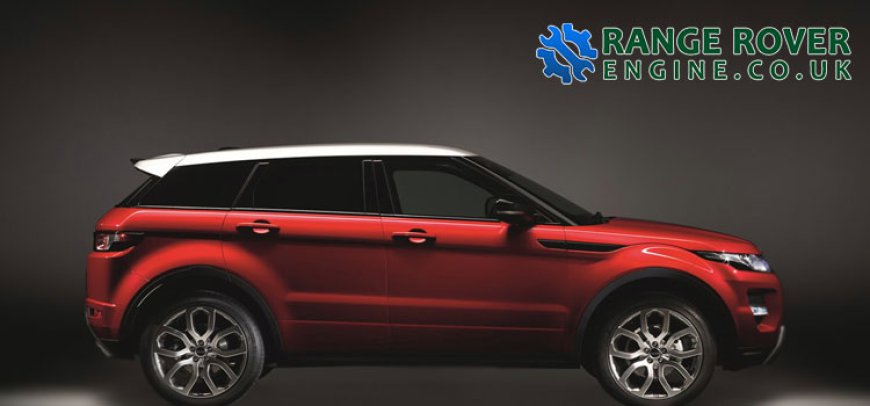Exploring the Evolution of Land Rover Engines
Land Rover Engines

The evolution of Land Rover Engines is a fascinating journey that mirrors the brand's transformation from a rugged utility vehicle to a sophisticated, globally recognized luxury 4x4. Over the decades, Land Rover has introduced various engine types to improve power, efficiency, emissions, and driving experience, adapting to technological advancements and changing consumer demands. Let's explore this evolution in detail:
1. The Early Years (1948-1960s)
In the beginning, Land Rover was focused on utility and off-road performance, with engines that reflected this.
-
1948 – Series I (88 and 109 models): The very first Land Rovers were powered by the 2.0L (1595 cc) Rover engine. This was a four-cylinder petrol engine derived from the pre-war Rover P3 car engine. It produced about 50 horsepower.
-
Series I (later models): In 1957, a 2.0L petrol engine was joined by the 2.25L petrol and later the 2.25L diesel engine. Diesel engines became important for their better fuel efficiency and torque, which was crucial for heavy-duty use. The 2.25L diesel was a naturally aspirated engine producing around 51 hp.
2. The Classic Era (1970s-1980s)
Land Rover expanded its range with larger engines and more power options as the vehicles grew in size and sophistication.
-
1970 – Range Rover Introduction: The Range Rover, launched in 1970, featured the 3.5L V8 petrol engine, a significant step up in power and refinement. This engine was developed from the Buick V8 and produced around 130 hp, providing better performance and comfort for higher-end consumers.
-
1970s-1980s: Throughout the 1970s and 1980s, Land Rover introduced various engine options, including the 2.5L diesel engine in the 1970s, which offered more torque and was aimed at markets with a demand for workhorse vehicles. The brand also offered the 3.5L V8 petrol engine in both Range Rover and other models.
3. The Turbocharged and Modernization Era (1990s-2000s)
The 1990s saw Land Rover evolve significantly, particularly with its engine lineup as emission regulations became stricter and the demand for efficiency increased.
-
1990s: The 2.5L Turbo Diesel engine was a notable engine in this era, particularly in the Defender 90 and 110 models. It was paired with a five-speed manual gearbox and gave a good balance of power and fuel economy, although still under 100 horsepower.
-
Range Rover P38A (1994-2002): This model introduced more refined engines, including the 4.0L and 4.6L V8 petrol engines and more advanced 2.5L turbocharged diesel engines. Land Rover also began offering more efficient, computer-controlled, multi-point fuel injection systems.
-
Discovery II (1998-2004): The Discovery II featured a variety of powertrains, including a 4.0L V8 petrol engine and a 2.5L Td5 turbocharged diesel engine. The Td5, a five-cylinder diesel engine, was known for its robustness and better fuel economy compared to earlier diesel engines.
4. The Shift to Efficiency and Power (2010s-Present)
As Land Rover moved into the 2010s, it embraced new technologies to improve efficiency, reduce emissions, and enhance performance while still maintaining the off-road capabilities for which the brand is known.
-
Range Rover L405 (2012-Present): The launch of the 4.4L SDV8 and 3.0L V6 TDV6 turbocharged diesel engines marked the start of more eco-conscious and efficient engines. These engines were much more fuel-efficient than older models, with the 3.0L supercharged V6 petrol engine offering impressive power at around 340 hp.
-
Land Rover Ingenium Engine Family (2015-Present): The Ingenium family of engines, introduced in 2015, marked a significant turning point for Land Rover. This new generation of engines included both petrol and diesel variants. The engines were developed in-house by Jaguar Land Rover, offering a modular design to fit different models and configurations.
-
The Ingenium 2.0L turbocharged 4-cylinder engine is now common in the Discovery Sport and Range Rover Evoque. This engine offers an impressive balance of power (around 200-300 hp) and fuel efficiency (with CO2 emissions as low as 124 g/km for some models).
-
The Ingenium 3.0L V6 and 4.4L V8 (both supercharged and turbocharged variants) have also been used in more powerful models like the Range Rover and Range Rover Sport, where power figures can reach up to 500+ hp, maintaining Land Rover's luxurious and performance-oriented appeal.
-
-
Electric Power (2020s): Land Rover has also ventured into electrification. The Land Rover Defender 130 has embraced hybrid powertrains, while Jaguar Land Rover is gradually rolling out fully electric powertrains under its new "Reimagine" strategy for the 2020s and beyond. In 2024, we saw the introduction of the fully electric Range Rover and Range Rover Sport, with impressive battery ranges and performance.
5. Future Trends
-
Electric and Hybrid Engines: As part of Jaguar Land Rover's push towards sustainability, the company plans to offer fully electric powertrains across its range by 2030, with plug-in hybrids (PHEVs) playing a significant role in the transition. The Range Rover Velar and Defender models have already seen hybrid options, and future releases are likely to follow this trend.
-
Hydrogen and Next-Gen Powertrains: Land Rover has been exploring hydrogen fuel cell technologies for future off-roaders, and it's expected that we may see prototypes or production models in the coming years as the demand for zero-emissions vehicles grows.
Conclusion
Land Rover's engine evolution tells a story of technological innovation and adaptation. From the humble beginnings of a small 2.0L petrol engine in the 1940s to the advanced Ingenium engines and electric powertrains of today, the brand has continuously improved its powertrains to meet both performance expectations and environmental standards. Whether for tackling rugged terrain or providing a luxurious driving experience, Land Rover engines have always been at the forefront of blending power, efficiency, and technology.
